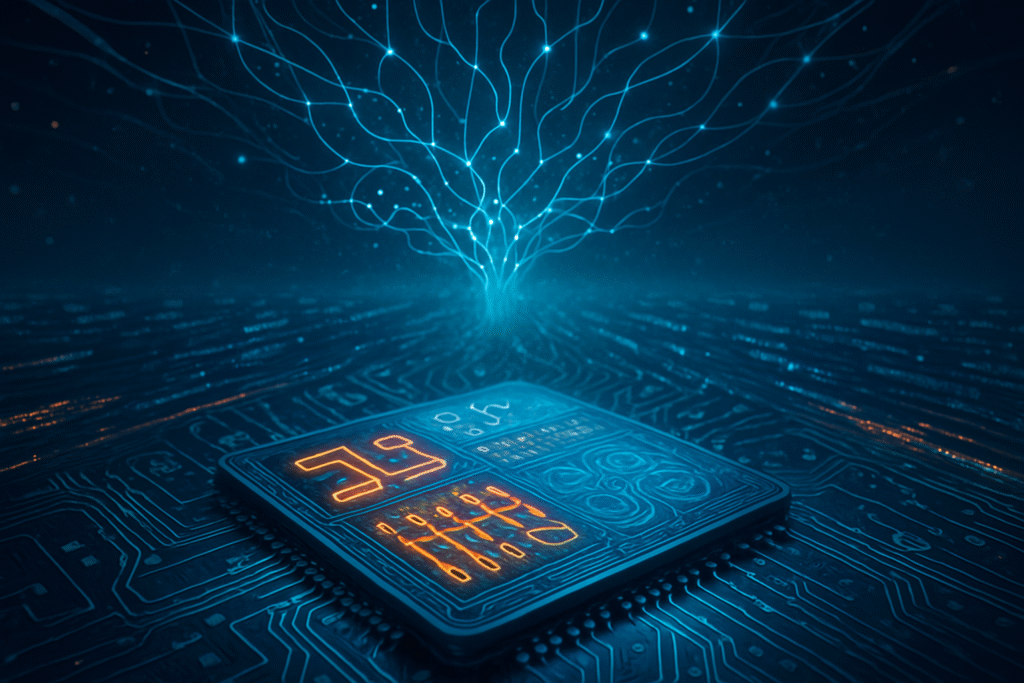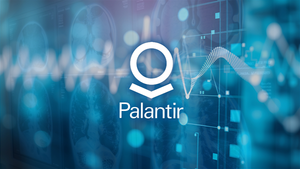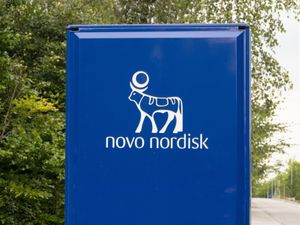Financial News
The Quantum Foundry: How Semiconductor Breakthroughs are Forging the Future of AI

The convergence of quantum computing and artificial intelligence stands as one of the most transformative technological narratives of our time. At its heart lies the foundational semiconductor technology that underpins the very existence of quantum computers. Recent advancements in creating and controlling quantum bits (qubits) across various architectures—superconducting, silicon spin, and topological—are not merely incremental improvements; they represent a paradigm shift poised to unlock unprecedented computational power for artificial intelligence, tackling problems currently intractable for even the most powerful classical supercomputers. This evolution in semiconductor design and fabrication is setting the stage for a new era of AI breakthroughs, promising to redefine industries and solve some of humanity's most complex challenges.
The Microscopic Battleground: Unpacking Qubit Semiconductor Technologies
The physical realization of qubits demands specialized semiconductor materials and fabrication processes capable of maintaining delicate quantum states for sufficient durations. Each leading qubit technology presents a unique set of technical requirements, manufacturing complexities, and operational characteristics.
Superconducting Qubits, championed by industry giants like Google (NASDAQ: GOOGL) and IBM (NYSE: IBM), are essentially artificial atoms constructed from superconducting circuits, primarily aluminum or niobium on silicon or sapphire substrates. Key components like Josephson junctions, typically Al/AlOx/Al structures, provide the necessary nonlinearity for qubit operation. These qubits are macroscopic, measuring in micrometers, and necessitate operating temperatures near absolute zero (10-20 millikelvin) to preserve superconductivity and quantum coherence. While coherence times typically range in microseconds, recent research has pushed these beyond 100 microseconds. Fabrication leverages advanced nanofabrication techniques, including lithography and thin-film deposition, often drawing parallels to established CMOS pilot lines for 200mm and 300mm wafers. However, scalability remains a significant challenge due to extreme cryogenic overhead, complex control wiring, and the sheer volume of physical qubits (thousands per logical qubit) required for error correction.
Silicon Spin Qubits, a focus for Intel (NASDAQ: INTC) and research powerhouses like QuTech and Imec, encode quantum information in the intrinsic spin of electrons or holes confined within nanoscale silicon structures. The use of isotopically purified silicon-28 (²⁸Si) is crucial to minimize decoherence from nuclear spins. These qubits are significantly smaller, with quantum dots around 50 nanometers, offering higher density. A major advantage is their high compatibility with existing CMOS manufacturing infrastructure, promising a direct path to mass production. While still requiring cryogenic environments, some silicon spin qubits can operate at relatively higher temperatures (around 1 Kelvin), simplifying cooling infrastructure. They boast long coherence times, from microseconds for electron spins to seconds for nuclear spins, and have demonstrated single- and two-qubit gate fidelities exceeding 99.95%, surpassing fault-tolerant thresholds using standard 300mm foundry processes. Challenges include achieving uniformity across large arrays and developing integrated cryogenic control electronics.
Topological Qubits, a long-term strategic bet for Microsoft (NASDAQ: MSFT), aim for inherent fault tolerance by encoding quantum information in non-local properties of quasiparticles like Majorana Zero Modes (MZMs). This approach theoretically makes them robust against local noise. Their realization requires exotic material heterostructures, often combining superconductors (e.g., aluminum) with specific semiconductors (e.g., Indium-Arsenide nanowires) fabricated atom-by-atom using molecular beam epitaxy. These systems demand extremely low temperatures and precise magnetic fields. While still largely experimental and facing skepticism regarding their unambiguous identification and control, their theoretical promise of intrinsic error protection could drastically reduce the overhead for quantum error correction, a "holy grail" for scalable quantum computing.
Initial reactions from the AI and quantum research communities reflect a blend of optimism and caution. Superconducting qubits are acknowledged for their maturity and fast gates, but their scalability issues are a constant concern. Silicon spin qubits are increasingly viewed as a highly promising platform due lauded for their CMOS compatibility and potential for high-density integration. Topological qubits, while still nascent and controversial, are celebrated for their theoretical robustness, with any verified progress generating considerable excitement for their potential to simplify fault-tolerant quantum computing.
Reshaping the AI Ecosystem: Implications for Tech Giants and Startups
The rapid advancements in quantum computing semiconductors are not merely a technical curiosity; they are fundamentally reshaping the competitive landscape for AI companies, tech giants, and innovative startups. Companies are strategically investing in diverse qubit technologies and hybrid approaches to unlock new computational paradigms and gain a significant market advantage.
Google (NASDAQ: GOOGL) is heavily invested in superconducting qubits, with its Quantum AI division focusing on hardware and cutting-edge quantum software. Through open-source frameworks like Cirq and TensorFlow Quantum, Google is bridging classical machine learning with quantum computation, prototyping hybrid classical-quantum AI models. Their strategy emphasizes hardware scalability through cryogenic infrastructure, modular architectures, and strategic partnerships, including simulating 40-qubit systems with NVIDIA (NASDAQ: NVDA) GPUs.
IBM (NYSE: IBM), an "AI First" company, has established a comprehensive quantum ecosystem via its IBM Quantum Cloud and Qiskit SDK, providing cloud-based access to its superconducting quantum computers. IBM leverages AI to optimize quantum programming and execution efficiency through its Qiskit AI Transpiler and is developing AI-driven cryptography managers to address future quantum security risks. The company aims for 100,000 qubits by 2033, showcasing its long-term commitment.
Intel (NASDAQ: INTC) is strategically leveraging its deep expertise in CMOS manufacturing to advance silicon spin qubits. Its "Tunnel Falls" chip and "Horse Ridge" cryogenic control electronics demonstrate progress towards high qubit density and fault-tolerant quantum computing, positioning Intel to potentially mass-produce quantum processors using existing fabs.
Microsoft (NASDAQ: MSFT) has committed to fault-tolerant quantum systems through its topological qubit research and the "Majorana 1" chip. Its Azure Quantum platform provides cloud access to both its own quantum tools and third-party quantum hardware, integrating quantum with high-performance computing (HPC) and AI. Microsoft views quantum computing as the "next big accelerator in cloud," investing substantially in AI data centers and custom silicon.
Beyond these giants, companies like Amazon (NASDAQ: AMZN) offer quantum computing services through Amazon Braket, while NVIDIA (NASDAQ: NVDA) provides critical GPU infrastructure and SDKs for hybrid quantum-classical computing. Numerous startups, such as Quantinuum and IonQ (NYSE: IONQ), are exploring "quantum AI" applications, specializing in different qubit technologies (trapped ions for IonQ) and developing generative quantum AI frameworks.
The companies poised to benefit most are hyperscale cloud providers offering quantum computing as a service, specialized quantum hardware and software developers, and early adopters in high-stakes industries like pharmaceuticals, materials science, and finance. Quantum-enhanced AI promises to accelerate R&D, solve previously unsolvable problems, and demand new skills, creating a competitive race for quantum-savvy AI professionals. Potential disruptions include faster and more efficient AI training, revolutionized machine learning, and an overhaul of cybersecurity, necessitating a rapid transition to post-quantum cryptography. Strategic advantages will accrue to first-movers who successfully integrate quantum-enhanced AI, achieve reduced costs, foster innovation, and build robust strategic partnerships.
A New Frontier: Wider Significance and the Broader AI Landscape
The advancements in quantum computing semiconductors represent a pivotal moment, signaling a fundamental shift in the broader AI landscape. This is not merely an incremental improvement but a foundational technology poised to address critical bottlenecks and enable future breakthroughs, particularly as classical hardware approaches its physical limits.
The impacts on various industries are profound. In healthcare and drug discovery, quantum-powered AI can accelerate drug development by simulating complex molecular interactions with unprecedented accuracy, leading to personalized treatments and improved diagnostics. For finance, quantum algorithms can revolutionize investment strategies, risk management, and fraud detection through enhanced optimization and real-time data analysis. The automotive and manufacturing sectors will see more efficient autonomous vehicles and optimized production processes. Cybersecurity faces both threats and solutions, as quantum computing necessitates a rapid transition to post-quantum cryptography while simultaneously offering new quantum-based encryption methods. Materials science will benefit from quantum simulations to design novel materials for more efficient chips and other applications, while logistics and supply chain management will see optimized routes and inventory.
However, this transformative potential comes with significant concerns. Error correction remains a formidable challenge; qubits are inherently fragile and prone to decoherence, requiring substantial hardware overhead to form stable "logical" qubits. Scalability to millions of qubits, essential for commercially relevant applications, demands specialized cryogenic environments and intricate connectivity. Ethical implications are also paramount: quantum AI could exacerbate data privacy concerns, amplify biases in training data, and complicate AI explainability. The high costs and specialized expertise could widen the digital divide, and the potential for misuse (e.g., mass surveillance) requires careful consideration and ethical governance. The environmental impact of advanced semiconductor production and cryogenic infrastructure also demands sustainable practices.
Comparing this development to previous AI milestones highlights its unique significance. While classical AI's progress has been driven by massive data and increasingly powerful GPUs, it struggles with problems having enormous solution spaces. Quantum computing, leveraging superposition and entanglement, offers an exponential increase in processing capacity, a more dramatic leap than the polynomial speedups of past classical computing advancements. This addresses the current hardware limits pushing deep learning and large language models to their breaking point. Experts view the convergence of quantum computing and AI in semiconductor design as a "mutually reinforcing power couple" that could accelerate the development of Artificial General Intelligence (AGI), marking a paradigm shift from incremental improvements to a fundamental transformation in how intelligent systems are built and operate.
The Quantum Horizon: Charting Future Developments
The journey of quantum computing semiconductors is far from over, with exciting near-term and long-term developments poised to reshape the technological landscape and unlock the full potential of AI.
In the near-term (1-5 years), we expect continuous improvements in current qubit technologies. Companies like IBM and Google will push superconducting qubit counts and coherence times, with IBM aiming for 100,000 qubits by 2033. IonQ (NYSE: IONQ) and other trapped-ion qubit developers will enhance algorithmic qubit counts and fidelities. Intel (NASDAQ: INTC) will continue refining silicon spin qubits, focusing on integrated cryogenic control electronics to boost performance and scalability. A major focus will be on advancing hybrid quantum-classical architectures, where quantum co-processors augment classical systems for specific computational bottlenecks. Breakthroughs in real-time, low-latency quantum error mitigation, such as those demonstrated by Rigetti and Riverlane, will be crucial for making these hybrid systems more practical.
The long-term (5-10+ years) vision is centered on achieving fault-tolerant, large-scale quantum computers. IBM has a roadmap for 200 logical qubits by 2029 and 2,000 by 2033, capable of millions of quantum gates. Microsoft (NASDAQ: MSFT) aims for a million-qubit system based on topological qubits, which are theorized to be inherently more stable. We will see advancements in photonic qubits for room-temperature operation and novel architectures like modular systems and advanced error correction codes (e.g., quantum low-density parity-check codes) to significantly reduce the physical qubit overhead required for logical qubits. Research into high-temperature superconductors could eventually eliminate the need for extreme cryogenic cooling, further simplifying hardware.
These advancements will enable a plethora of potential applications and use cases for quantum-enhanced AI. In drug discovery and healthcare, quantum AI will simulate molecular behavior and biochemical reactions with unprecedented speed and accuracy, accelerating drug development and personalized medicine. Materials science will see the design of novel materials with desired properties at an atomic level. Financial services will leverage quantum AI for dramatic portfolio optimization, enhanced credit scoring, and fraud detection. Optimization and logistics will benefit from quantum algorithms excelling at complex supply chain management and industrial automation. Quantum neural networks (QNNs) will emerge, processing information in fundamentally different ways, leading to more robust and expressive AI models. Furthermore, quantum computing will play a critical role in cybersecurity, enabling quantum-safe encryption protocols.
Despite this promising outlook, remaining challenges are substantial. Decoherence, the fragility of qubits, continues to demand sophisticated engineering and materials science. Manufacturing at scale requires precision fabrication, high-purity materials, and complex integration of qubits, gates, and control systems. Error correction, while improving (e.g., IBM's new error-correcting code is 10 times more efficient), still demands significant physical qubit overhead. The cost of current quantum computers, driven by extreme cryogenic requirements, remains prohibitive for widespread adoption. Finally, a persistent shortage of quantum computing experts and the complexity of developing quantum algorithms pose additional hurdles.
Expert predictions point to several major breakthroughs. IBM anticipates the first "quantum advantage"—where quantum computers outperform classical methods—by late 2026. Breakthroughs in logical qubits, with Google and Microsoft demonstrating logical qubits outperforming physical ones in error rates, mark a pivotal moment for scalable quantum computing. The synergy between AI and quantum computing is expected to accelerate, with hybrid quantum-AI systems impacting optimization, drug discovery, and climate modeling. The quantum computing market is projected for significant growth, with commercial systems capable of accurate calculations with 200 to 1,000 reliable logical qubits considered a technical inflection point. The future will also see integrated quantum and classical platforms and, ultimately, autonomous AI-driven semiconductor design.
The Quantum Leap: A Comprehensive Wrap-Up
The journey into quantum computing, propelled by groundbreaking advancements in semiconductor technology, is fundamentally reshaping the landscape of Artificial Intelligence. The meticulous engineering of superconducting, silicon spin, and topological qubits is not merely pushing the boundaries of physics but is laying the groundwork for AI systems of unprecedented power and capability. This intricate dance between quantum hardware and AI software promises to unlock solutions to problems that have long evaded classical computation, from accelerating drug discovery to optimizing global supply chains.
The significance of this development in AI history cannot be overstated. It represents a foundational shift, akin to the advent of the internet or the rise of deep learning, but with a potentially far more profound impact due to its exponential computational advantages. Unlike previous AI milestones that often relied on scaling classical compute, quantum computing offers a fundamentally new paradigm, addressing the inherent limitations of classical physics. While the immediate future will see the refinement of hybrid quantum-classical approaches, the long-term trajectory points towards fault-tolerant quantum computers that will enable AI to tackle problems of unparalleled complexity and scale.
However, the path forward is fraught with challenges. The inherent fragility of qubits, the immense engineering hurdles of manufacturing at scale, the resource-intensive nature of error correction, and the staggering costs associated with cryogenic operations all demand continued innovation and investment. Ethical considerations surrounding data privacy, algorithmic bias, and the potential for misuse also necessitate proactive engagement from researchers, policymakers, and industry leaders.
As we move forward, the coming weeks and months will be crucial for watching key developments. Keep an eye on progress in achieving higher logical qubit counts with lower error rates across all platforms, particularly the continued validation of topological qubits. Monitor the development of quantum error correction techniques and their practical implementation in larger systems. Observe how major tech companies like Google (NASDAQ: GOOGL), IBM (NYSE: IBM), Intel (NASDAQ: INTC), and Microsoft (NASDAQ: MSFT) continue to refine their quantum roadmaps and forge strategic partnerships. The convergence of AI and quantum computing is not just a technological frontier; it is the dawn of a new era of intelligence, demanding both audacious vision and rigorous execution.
This content is intended for informational purposes only and represents analysis of current AI developments.
TokenRing AI delivers enterprise-grade solutions for multi-agent AI workflow orchestration, AI-powered development tools, and seamless remote collaboration platforms.
For more information, visit https://www.tokenring.ai/.
More News
View More





Quotes delayed at least 20 minutes.
By accessing this page, you agree to the Privacy Policy and Terms Of Service.



